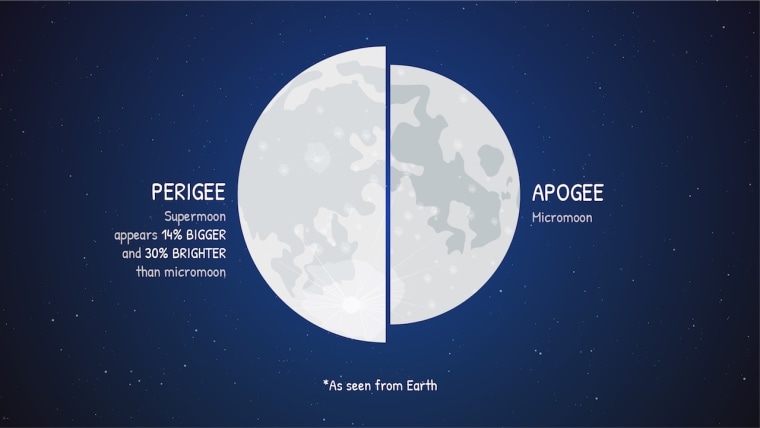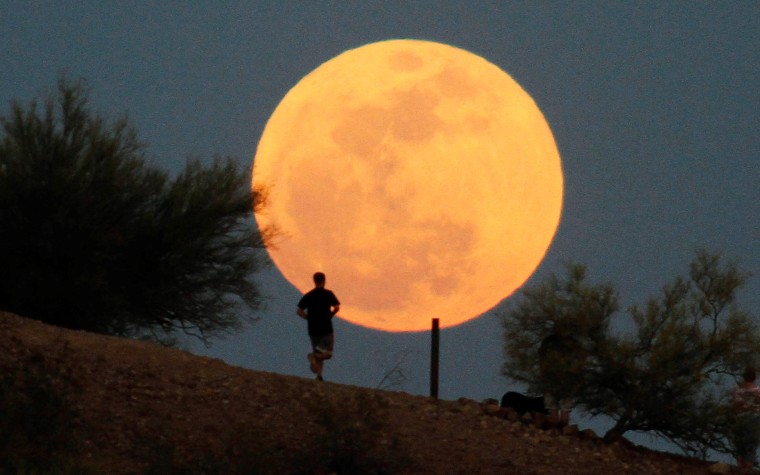Full moons always make for dramatic skywatching, but so-called “supermoons” are even more special because they appear a bit bigger and brighter than a typical full moon.
What is a supermoon?
It’s a full moon that coincides with lunar perigee, the point in the moon’s elliptical orbit around Earth when it is closest to our planet.
On average, the moon orbits at a distance of about 238,000 miles from Earth. But at perigee, it’s about 226,000 miles away — or about 12,000 miles closer to Earth. So if the moon is full at this point, it appears up to 30 percent brighter and up to 14 percent larger than a full moon that occurs when the moon is at its most distant point from Earth in its elliptical orbit. That point is known as lunar apogee.

The term supermoon was coined by an astrologer, and not all astronomers are comfortable with it. Neil deGrasse Tyson, director of the Hayden Planetarium at the American Museum of Natural History in New York City, said in a 2017 tweet that “the very concept of a Super Moon is an embarrassment to everything else we call super: Supernova, Supercollider, Superman, Super Mario Bros.”
Other experts don’t mind the term because it offers a starting point for scientific discussions about the moon, including the fact that its orbit is elliptical and not circular, as many people assume.
And as Penn State University astronomer Christopher Palma wrote in 2016, "As an observational astronomer who teaches students about the behavior of the moon, I’m thankful for anything that inspires people to go out and look at the sky.”
How often do supermoons occur?
About once every 14 months.
When is the next supermoon?
There will be no more supermoons in 2018. Here are supermoons in the next three years:
- Jan. 21, 2019
- Feb. 19, 2019
- March 21, 2019
- Feb. 9, 2020
- March 9, 2020
- April 8, 2020
- May 7, 2020
- March 28, 2021
- April 27, 2021
- May 26, 2021
- June 24, 2021
Does the supermoon cause problems on Earth?
Despite what you may have read, there is no scientific evidence linking supermoons with severe weather, earthquakes, volcanic eruptions, or other natural phenomena.
What about the other terms I hear for the full moon?
A blue moon is the second full moon during a single calendar month. Despite the name, a blue moon doesn’t appear blue.
A blood moon is a full moon that occurs during a total lunar eclipse. When Earth slips between the full moon and the sun, the moon falls under Earth's shadow and takes on a reddish hue.
Ancient cultures assigned names to each month’s full moon depending in part upon the behavior of plants and animals at the time. The Farmer’s Almanac lists the following:
- January – Wolf Moon
- February – Snow Moon
- March – Worm Moon
- April – Pink Moon
- May – Flower Moon
- June – Strawberry Moon
- July – Buck Moon
- August – Sturgeon Moon
- September – Harvest Moon
- October – Hunter’s Moon
- November – Beaver Moon
- December – Cold Moon
